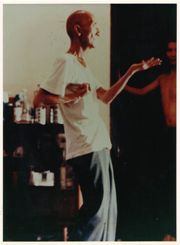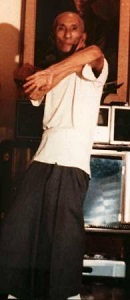Siu Lim Tao (little idea) is the first form that a student will learn in the Yip Man line of Wing Chun. Siu Lim Tao is often looked upon as the simplest set of Wing Chun, however as any long term practitioner will tell you, it is also one of the most advanced. Performed in a stationary stance called the yee jee kim yueng ma, or two character goat pressing stance, Siu Lim Tao teaches the student correct positioning for the basic movements of Wing Chun. As well it strengthens the legs and helps to create ‘root’, one of the most important elements in being able to generate power. In short, the form is a dictionary of the Wing Chun system.



It must be noted that this form should not be taken as a literal form as per other styles of martial arts. Rather Siu Lim Tao is a concept base from which techniques can be derived. Simply put Siu Lim Tao does not teach any literal sequences of movements with which to take an opponent out with. Instead Siu Lim Tao will teach the student how to use energy in their movements, correct skeletal positioning, and awareness of the centre line.
The first third of Siu Lim Tao is always performed very slowly. There is an often-quoted story about Yip Man placing some wet rice paper on his shoulders and then practising Siu Lim Tao. By the time he had finished the form the paper was dry. Whether this is true or not could never be verified for sure, but it is a lesson in patience for the form.
The second part of Siu Lim Tao shows the student how to apply energy and power into the last 6 inches of their movement. It teaches how to relax and explode the energy at the end of each strike. The last third combines the elements of the elbow energy of the first third, and the explosive power of the second. None of these sections are rushed however. You will never see Siu Lim Tao practised at speed.
There is far more scope to the form than any space here will permit, however these are the very basic elements that make up the Siu Lim Tao form.

Chum Kiu is the second form in the Yip Man style of Wing Chun. Chum Kiu, or seeking the bridge, teaches the student how to bridge with the opponent. While Siu Lim Tao shows how to control ones self, Chum Kiu teaches how to control others.
While Siu Lim Tao is performed in a stationary stance, Chum Kiu introduces footwork into the Wing Chun repertoire. Namely turning, stepping, and kicking. Chum Kiu will show how to link hand movements with footwork. Chum Kiu requires a lot more co-ordination than Siu Lim Tao and as such should not be attempted until a student fully understands the first form.
Biu Jee is generally regarded as one of the most advanced forms in Wing Chun, it is also considered one of the most secret. In reality the form is rarely taught, or indeed taught last, because knowledge of it's movements can be detrimental to a students Wing Chun if taught too early. Many of the movements from Biu Jee teach the practitioner how to regain the centre line. It is the general concencus that if you need to use any of Biu Jee's theories then you are already in a dire situation. This is why Biu Jee could be considered the emergency form. A Wing Chun student's aim in applying their Wing Chun should be such that they do not need to use any of their knowledge of this form.



